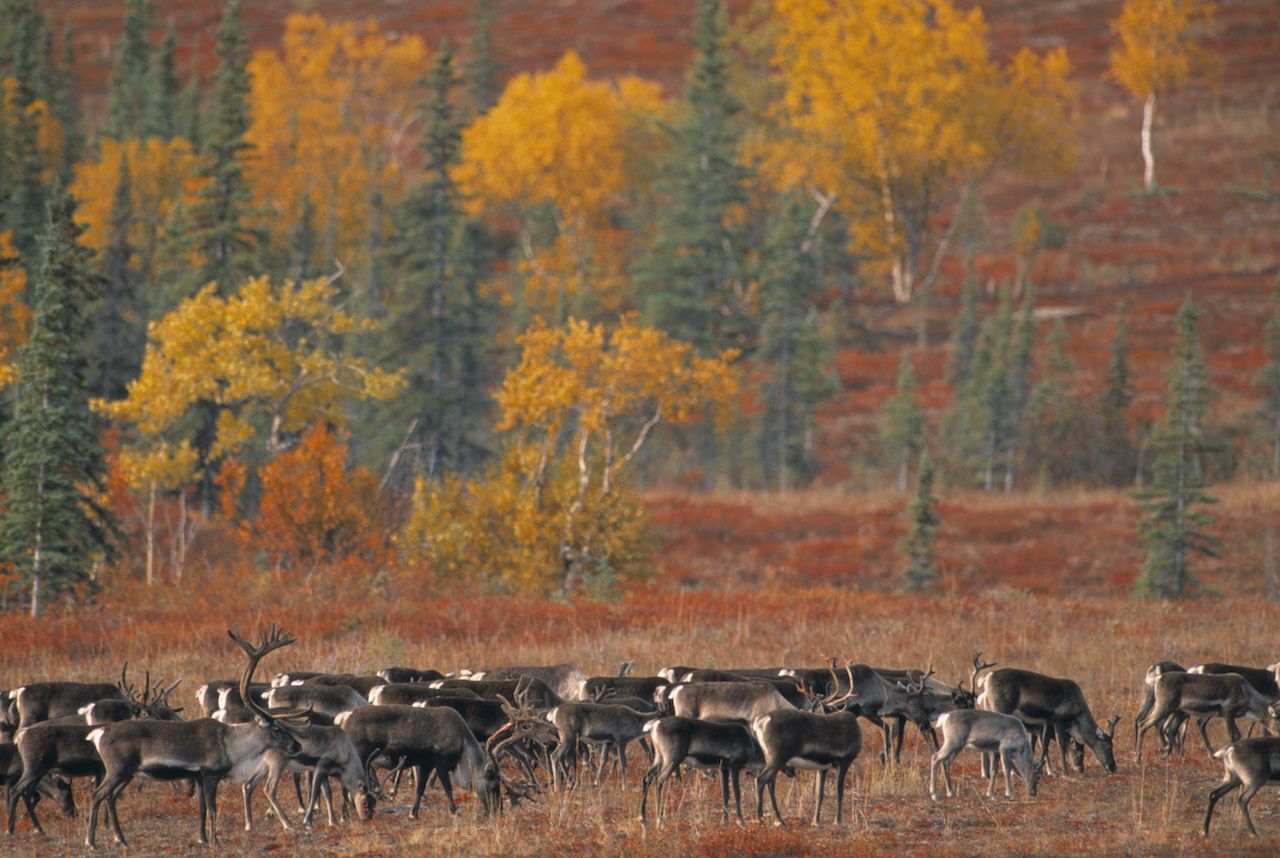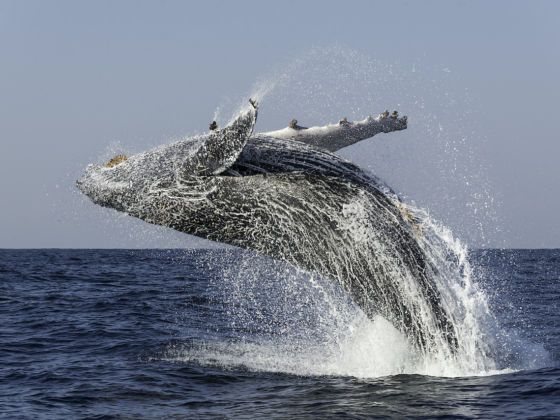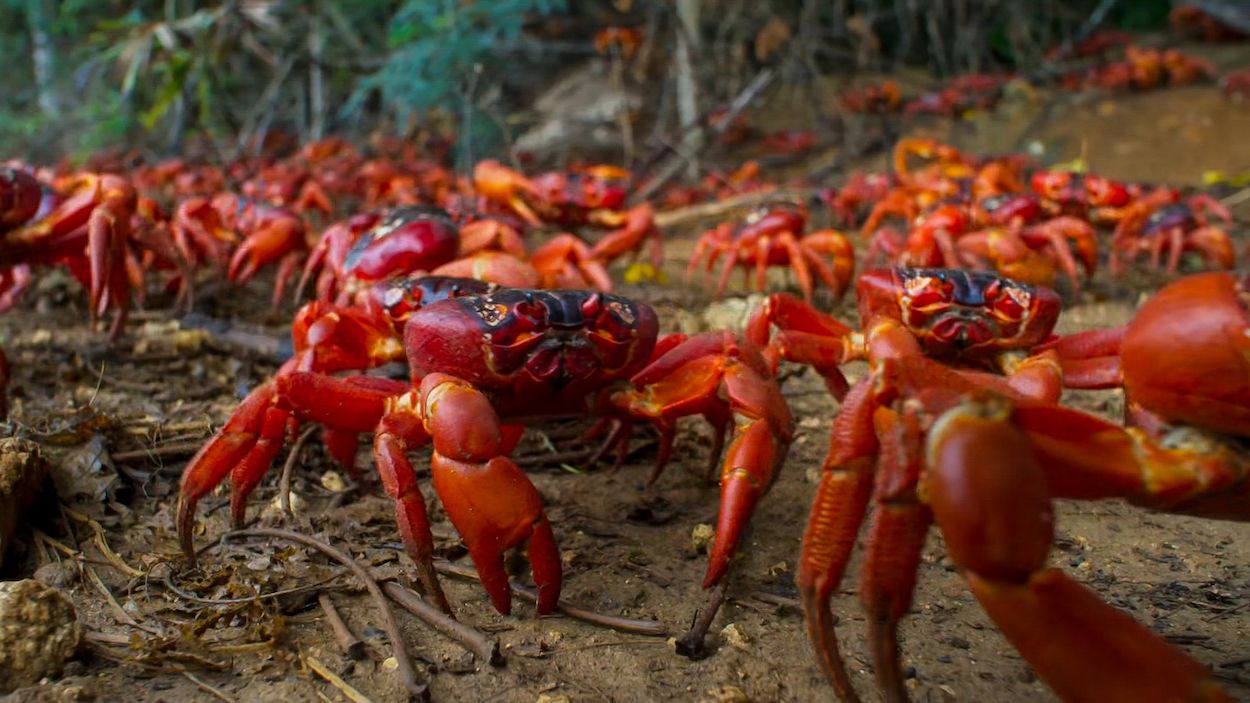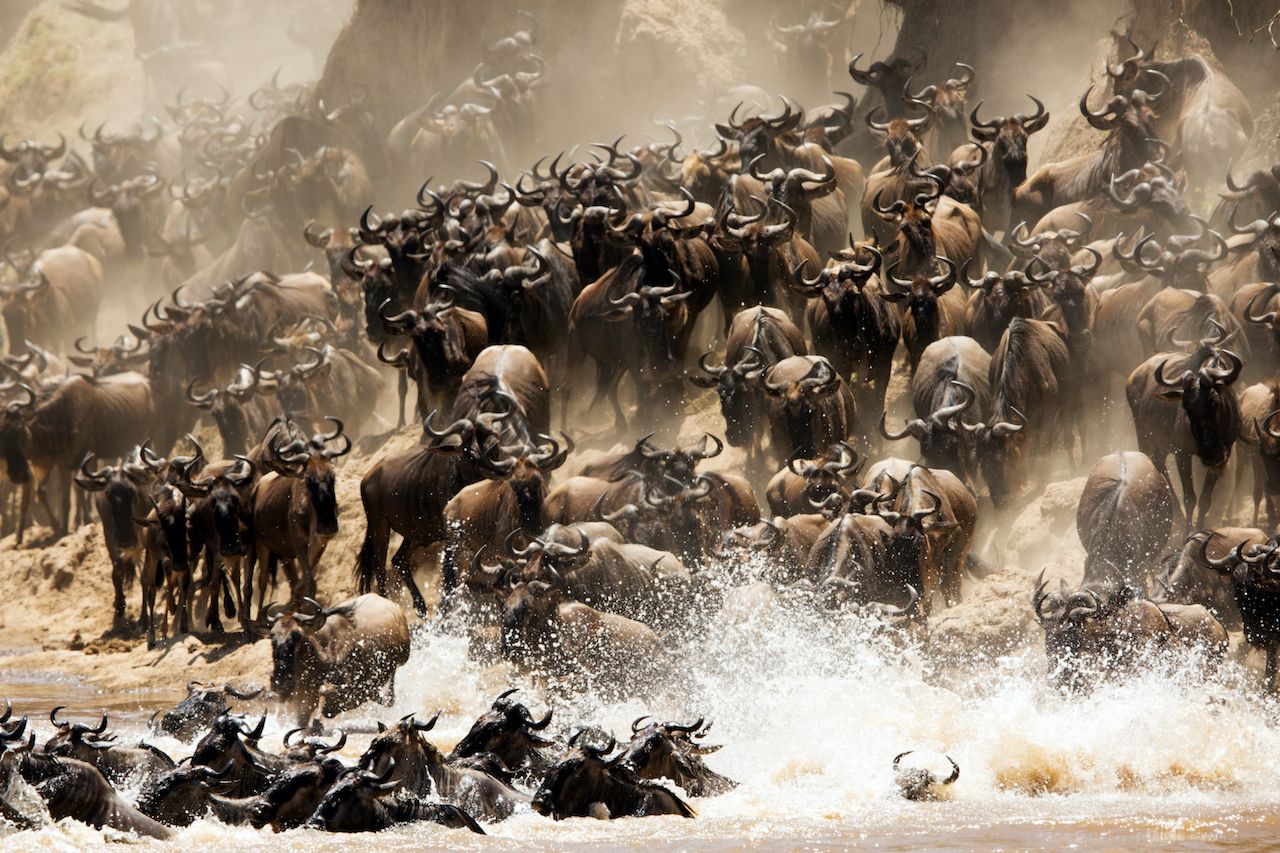Land
4. Caribou in Alaska and Canada

Photo: BMJ/Shutterstock
The movement of the caribou herds in the Arctic is the world’s largest land mammal migration. If you’re close enough and they’re on the move, you can feel the ground shake. However, to see the migration will cost you time and money. The caribou are crossing through remote tundra and taiga near the Arctic Circle, and the locations are hard (generally impossible) to get to without a guide. The migration can range over hundreds and thousands of miles, and due to changes in snowmelt and plant growth, the route shifts from year to year. So your best option for seeing the migration is with an organized group.



